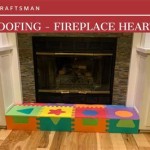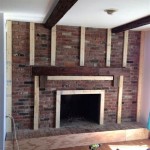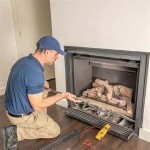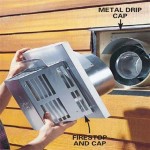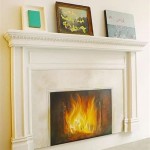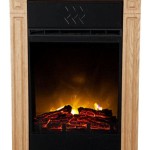Best Fireplace TV Wall Mount: Balancing Aesthetics and Safety
Mounting a television above a fireplace has become an increasingly popular interior design choice, offering a focal point and maximizing space. However, this configuration presents unique challenges relating to heat exposure, viewing angles, and cable management. Selecting the "best fireplace TV wall mount" involves careful consideration of several factors to ensure a safe and aesthetically pleasing installation.
This article will explore the key aspects of choosing the right fireplace TV wall mount, focusing on factors like heat resistance, weight capacity, adjustability, and installation considerations. It will present practical advice and shed light on the various mount types available to help individuals make informed decisions when integrating their television and fireplace.
Understanding Heat Considerations
The primary concern when mounting a TV above a fireplace is mitigating the potential damage from heat exposure. Televisions are electronic devices designed to operate within specific temperature ranges. Prolonged exposure to excessive heat can significantly reduce a TV's lifespan, causing issues such as screen discoloration, component failure, and degraded picture quality.
The amount of heat radiating from a fireplace varies significantly depending on the type of fireplace (wood-burning, gas, or electric), the frequency of use, and the insulation around the fireplace. Wood-burning fireplaces typically generate the most heat, while electric fireplaces often produce the least. Before considering a TV mount, it is crucial to assess the heat output of the fireplace during typical operation. This can be done by measuring the temperature of the wall above the mantel using a thermometer designed for high temperatures over a period of extended fireplace use. If the temperature consistently exceeds the maximum operating temperature specified by the TV manufacturer (usually found in the TV's specifications), mounting the TV directly above the fireplace may not be advisable without significant heat shielding or alternative mounting locations.
In instances where mounting above the fireplace is desired despite high heat output, several precautions can be taken. Installing a thick mantel can act as a heat shield, deflecting heat away from the television. The mantel should extend far enough to effectively block rising heat. Ventilation is also crucial. Ensuring adequate airflow around the television can help dissipate heat and prevent it from building up. Some mounts are designed with built-in ventilation features to assist with this. Moreover, specific heat shields designed for TV mounts are available. These shields are typically constructed from materials with high thermal resistance and are designed to further protect the television from heat damage.
Another strategy involves choosing a low-emission fireplace. Gas fireplaces, particularly those with modern designs, often feature sealed combustion chambers and direct venting systems that minimize heat transfer to the surrounding area. Electric fireplaces, while not always providing the same aesthetic appeal as traditional fireplaces, produce very little heat and are generally safer for mounting televisions above.
Evaluating Mount Types and Adjustability
The selection of a suitable TV mount depends on the size and weight of the television, as well as the desired viewing experience. Fireplace TV mounts come in various types, each offering different levels of adjustability and functionality. The most common types include fixed mounts, tilting mounts, and full-motion mounts.
Fixed mounts are the simplest and most affordable option. They hold the television securely against the wall with minimal movement. Fixed mounts are suitable for situations where the viewing angle is already ideal and no adjustments are needed. However, they offer limited flexibility in addressing glare or optimizing the viewing experience from different locations in the room.
Tilting mounts allow the television to be tilted vertically, which can help reduce glare from overhead lights or improve the viewing angle from lower seating positions. Tilting mounts are a good compromise between affordability and adjustability. They provide some flexibility in improving the viewing experience without the complexity and expense of full-motion mounts.
Full-motion mounts, also known as articulating mounts, offer the greatest range of adjustability. They allow the television to be tilted, swiveled, and extended away from the wall, providing optimal viewing angles from virtually any location in the room. Full-motion mounts are particularly useful in rooms with multiple seating areas or where the television needs to be adjusted frequently. However, they are typically more expensive and require more complex installation than fixed or tilting mounts.
When selecting a mount, it is essential to verify that it is compatible with the television's VESA (Video Electronics Standards Association) mounting pattern. The VESA pattern is a standard set of mounting hole dimensions on the back of the television. Mounts are typically designed to accommodate specific VESA patterns. Checking the television's specifications and the mount's compatibility information will ensure a secure and proper fit.
Furthermore, the mount's weight capacity must exceed the weight of the television. Overloading a mount can create a safety hazard and potentially damage the television or the wall. It is advisable to choose a mount with a weight capacity that is significantly higher than the television's weight to provide an extra margin of safety.
Installation Considerations and Cable Management
Proper installation is crucial for ensuring the safety and stability of the TV mount. While some individuals may opt for DIY installation, professional installation is generally recommended, especially for larger televisions or complex mounting situations. Professional installers have the expertise and tools necessary to ensure that the mount is securely attached to the wall and that the television is properly leveled.
When installing a TV mount above a fireplace, it is essential to identify the wall studs behind the wall surface. Wall studs provide the strongest and most secure points for attaching the mount. A stud finder can be used to locate the studs. If the studs are not in the ideal location for mounting the television, it may be necessary to use a mounting plate or bridge to span the distance between the studs. These plates distribute the weight of the television across multiple studs, providing added stability.
Cable management is another important consideration. Running power and signal cables from the television to the source devices (e.g., cable box, Blu-ray player, game console) can create a cluttered and unsightly appearance. Several cable management solutions are available to conceal the cables and create a cleaner look. These solutions include cable raceways, in-wall cable management kits, and cable ties. Cable raceways are plastic channels that attach to the wall surface and conceal the cables. In-wall cable management kits allow the cables to be run inside the wall cavity, creating a completely hidden cable run. Cable ties can be used to bundle the cables together and prevent them from tangling or hanging loosely.
Before running any cables inside the wall, it is important to check local building codes and regulations. Some codes may require the use of plenum-rated cables, which are designed to be fire-resistant and produce minimal smoke in the event of a fire. It is also important to avoid running power cables alongside signal cables, as this can cause interference. In most cases, professional installers will be familiar with local codes and can ensure that the cable management is done safely and properly. Furthermore, consider future needs. Running extra cables during the initial installation can save time and effort later if additional devices are connected to the television.
Finally, maintaining the aesthetic harmony between the fireplace and the television is crucial. The size of the television should be proportionate to the size of the fireplace and the overall dimensions of the room. A television that is too large or too small can look out of place. The mount should also be chosen to complement the style of the fireplace and the surrounding decor. Consider the color and finish of the mount, as well as its design. A minimalist mount can be a good choice for a modern fireplace, while a more decorative mount may be suitable for a traditional fireplace.
Choosing the "best fireplace TV wall mount" requires a comprehensive assessment of factors ranging from heat management to installation logistics. By carefully considering these elements, individuals can create a visually appealing and safe entertainment setup that enhances their living space.

Can I Mount My Tv Above The Fireplace

How To Mount An Electric Fireplace With A Tv Fireplaces Direct Learning Center

Can I Mount My Tv Above The Fireplace

How To Mount A Tv Over Fireplace Vertical Chimney Care

Tmo100a Mount Tv Above Fireplace Mountable 55 Inches To 65 Tranquil

Best Modern Fireplace Designs Blaze

55 Tv Wall Ideas For A Stunning And Functional Home Design Living Room Decor Fireplace Trendy Rooms Designs

Matching Your Tv Size To Fireplace

Modern Tv Wall With Fireplace Iv Yo Carpentry

16 Modern Tv Wall Mount Ideas For Your Best Room Archlux Net Build A Fireplace Electric

